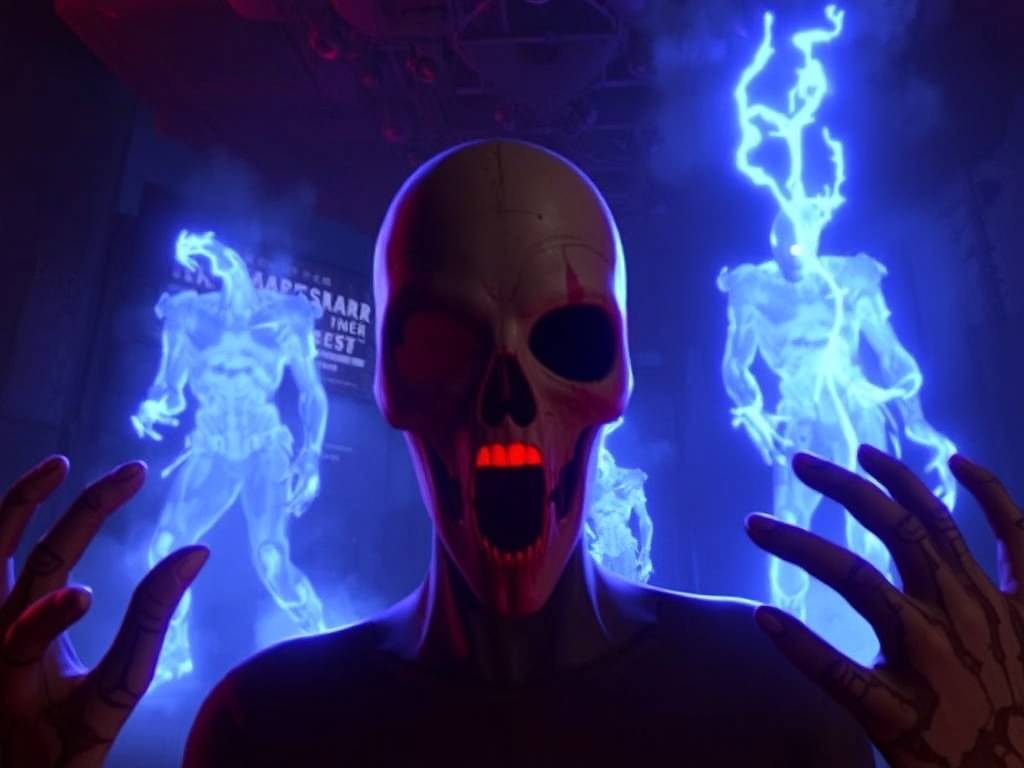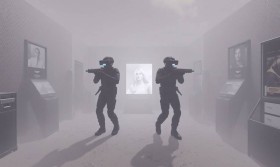Beyond the Scream: A Deep Dive into the 'Fear Missions' Expansion for Nightmare Simulator VR
The virtual reality landscape is one of constant evolution, pushing the boundaries of immersion from breathtaking vistas to heart-pounding action. Yet, one genre has consistently held a unique, albeit niche, position: horror. For years, Nightmare Simulator VR has stood as a pinnacle of this genre, a sandbox of terror that allowed players to confront their deepest fears in a controlled, yet utterly convincing, environment. It was a playground of phobias, but it lacked a certain... direction. That changes now. The 'Fear Missions' Expansion is not just an update; it is a fundamental reimagining of what horror VR can be, transforming the experience from a passive gallery of frights into an active, narrative-driven theater of terror.

From Sandbox to Story: The Core Philosophy
Previously, Nightmare Simulator VR excelled at simulating specific phobias—arachnophobia, claustrophobia, acrophobia—in isolated scenarios. The 'Fear Missions' expansion builds upon this robust foundation by weaving these elements into cohesive, high-stakes narratives. The core philosophy is simple yet revolutionary: fear is more potent when it has a purpose. Instead of merely being thrown into a room full of spiders, you are now an archaeologist tasked with retrieving a relic from a crypt that has been sealed for centuries, a crypt that also happens to be the nest of a previously unknown, and unnervingly intelligent, species of arachnid. The goal provides context, and context amplifies the dread exponentially.
The expansion introduces a new mission-select hub, a dimly lit, non-Euclidean space that serves as a briefing room. Here, players can choose from a series of missions, each categorized by a primary fear theme but often blending secondary anxieties to create a more complex psychological cocktail. The missions are not mere levels; they are short stories with objectives, environmental storytelling, and a palpable sense of progression that makes the horror feel earned, not just encountered.

Anatomy of a Fear Mission: A Case Study
Consider the mission titled "The Ascent of Regret." Its primary fear is acrophobia (fear of heights), but it masterfully incorporates elements of astraphobia (fear of storms) and a subtle, lingering claustrophobia.
Mission Briefing: You are a maintenance technician for a colossal, futuristic radio tower, the "Spire," which pierces the skyline. A catastrophic system failure has occurred at the summit during a violent electrical storm. Your objective: ascend the external maintenance gantries to manually reboot the primary transmitter.
The Descent into Dread: The mission begins safely inside the Spire's base. The sound of howling wind and groaning metal is oppressive. As you step onto the first external gantry, the VR immersion hits its stride. The haptic feedback in the controllers simulates the vibration of the structure. You look down, and through the mesh floor, you see the ground thousands of feet below, the city lights blurred by the torrential rain. This is where the mission's genius reveals itself: the mechanics are tied directly to the fear.
To progress, you must navigate narrow, rain-slicked beams, often with missing sections, forcing you to leap across gaps. The storm worsens, causing the entire tower to sway. Lightning strikes nearby, temporarily blinding you and causing systems to short out, plunging sections into darkness. You are not just walking; you are clinging to handrails, carefully judging distances, and fighting against the wind. The objective—to reach the top—is constantly at odds with your most basic instinct: to retreat to safety. The fear is no longer an abstract concept; it is an obstacle to be overcome.
A Tapestry of New Terrors
'Fear Missions' boasts a diverse roster of scenarios, each meticulously crafted:
- "Lepidoptera's Lament": A mission focused on entomophobia (fear of insects) set in a sprawling, abandoned greenhouse. The goal is to collect spore samples from a rare fungal bloom, but the facility has been reclaimed by giant, bioluminescent moths and other insects. The horror here is less about jump scares and more about the unsettling sensation of things fluttering against your VR headset, the sound of countless legs skittering in the dark, and the dread of shining your light into a nest.
- "The Iron Lung": A pure claustrophobia mission. You play a cave diver whose exit has collapsed. With a limited air supply, you must navigate a treacherous, narrowing underwater cave system, solving environmental puzzles while managing your panic and depleting oxygen levels. The sound of your own ragged breathing inside the dive helmet becomes the soundtrack to your escalating terror.
- "Echoes of the Estate": This mission tackles nyctophobia (fear of the dark) and paranoia. Armed only with a unreliable flashlight and a microphone that picks up supernatural audio frequencies, you must investigate a haunted manor. The twist? The entities are invisible and can only be perceived through the audio feed in your headphones. You must use sound to track their movement, creating an unparalleled level of psychological tension.
Technical Prowess: Deepening the Immersion
The expansion leverages cutting-edge VR technology to make these nightmares tangible. Advanced 3D audio ensures that every creak, whisper, and skitter is spatially accurate, allowing you to pinpoint the direction of a threat—or mistakenly believe it's right behind you. The graphics engine has been optimized to render complex, dynamic lighting and particle effects, making the storm in "The Ascent" or the swirling spores in "Lepidoptera's Lament" feel real.
Most impressively, the expansion includes a rudimentary bio-feedback integration (compatible with select wearables). While optional, this feature allows the game to subtly adjust the experience based on your heart rate. If the system detects elevated stress, it might prolong a moment of silence before a scare, or make a pursuing enemy slightly more persistent, creating a uniquely personalized horror experience.
The Verdict: A New Benchmark for VR Horror
The 'Fear Missions' expansion for Nightmare Simulator VR is a masterclass in game design. It understands that true horror is not about the number of jump scares, but about the sustained, escalating pressure of a dreadful situation. By providing narrative context and goal-oriented gameplay, it elevates the experience from a simple fear simulation to an emotional, adrenaline-fueled journey. It challenges the player not just to witness terror, but to persevere through it. This expansion doesn't just add content; it adds purpose, cementing Nightmare Simulator VR's position not only as a tech demo for phobias but as one of the most compelling and genuinely frightening narrative experiences in all of virtual reality.


















